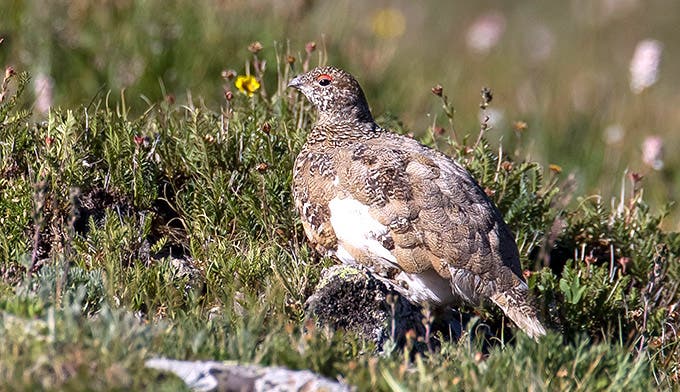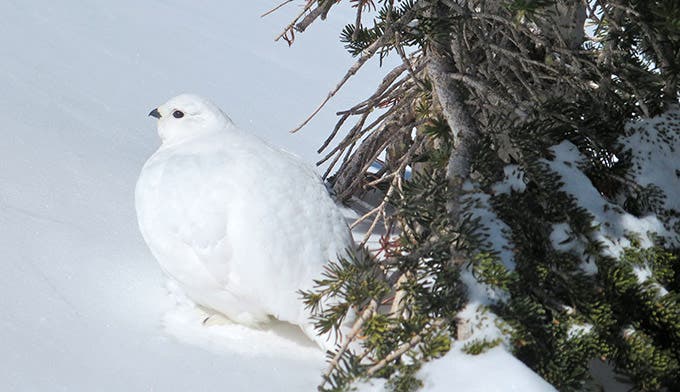Ptarmigans, the Rare White Enchanting Birds of Rocky Mountain National Park

'Courtesy of Ann Schonlau of Rocky Mountain National Park'
As you walk through Rocky Mountain National Park, do you notice a rock or two moving in the underbrush? These moving rocks are perfectly camouflaged ptarmigan.
Spotting the Ptarmigan

As the smallest grouse in North America, these birds turn a speckled brownish grey in the summer months. This color blends in with alpine willow and rocks that make up their environment. According to Kyle Patterson, public information officer for Rocky Mountain National Park, the best way to see these elusive species is, “to find a good habitat and sit and observe!” A great time to spot these birds is to look for them when half-molted in spring and fall when they are changing from white or to white, according to Patterson.
A popular spot in Rocky Mountain National Park to search for the rare bird is the trail at Medicine Bow Curve. Don’t get your hopes up, though. The ptarmigan’s population numbers are low, making it a very rare occurrence to stumble upon one.
Ptarmigans in Winter

Turning white in the winter to blend in with their snowy habitat, these tundra birds stay sheltered at tree line during colder months. The ptarmigan keep a watchful and alert eye out for natural predators in the park such as golden eagles, coyotes and high-altitude-roaming fox. In the winter months when the ground is completely white, look for crescent shaped bird droppings. These are from a ptarmigan and will sometimes mean that one is nearby. The ptarmigan do not fly very much but are more inclined to walk to their destinations to conserve energy. Thus, droppings could be a fresh clue to a nearby bird.
Ptarmigan tend to eat a vegetarian diet of seeds, buds and leaves. However, they have been known to have a supplemental diet of fruit, flowers and insects in the summer. The ptarmigan also swallows “grit” (sand, dust or dirt) to help grind food in its gizzard.
When a ptarmigan is spotted, don’t jump and shout as you will scare it away. These birds are skittish but will remain sedentary for a few good pictures if you are calm. Do not walk too close but rather observe the bird in its natural habitat. This will give you the best chance at prolonging your encounter with a rare ptarmigan, the white enchantress of Rocky Mountain National Park.